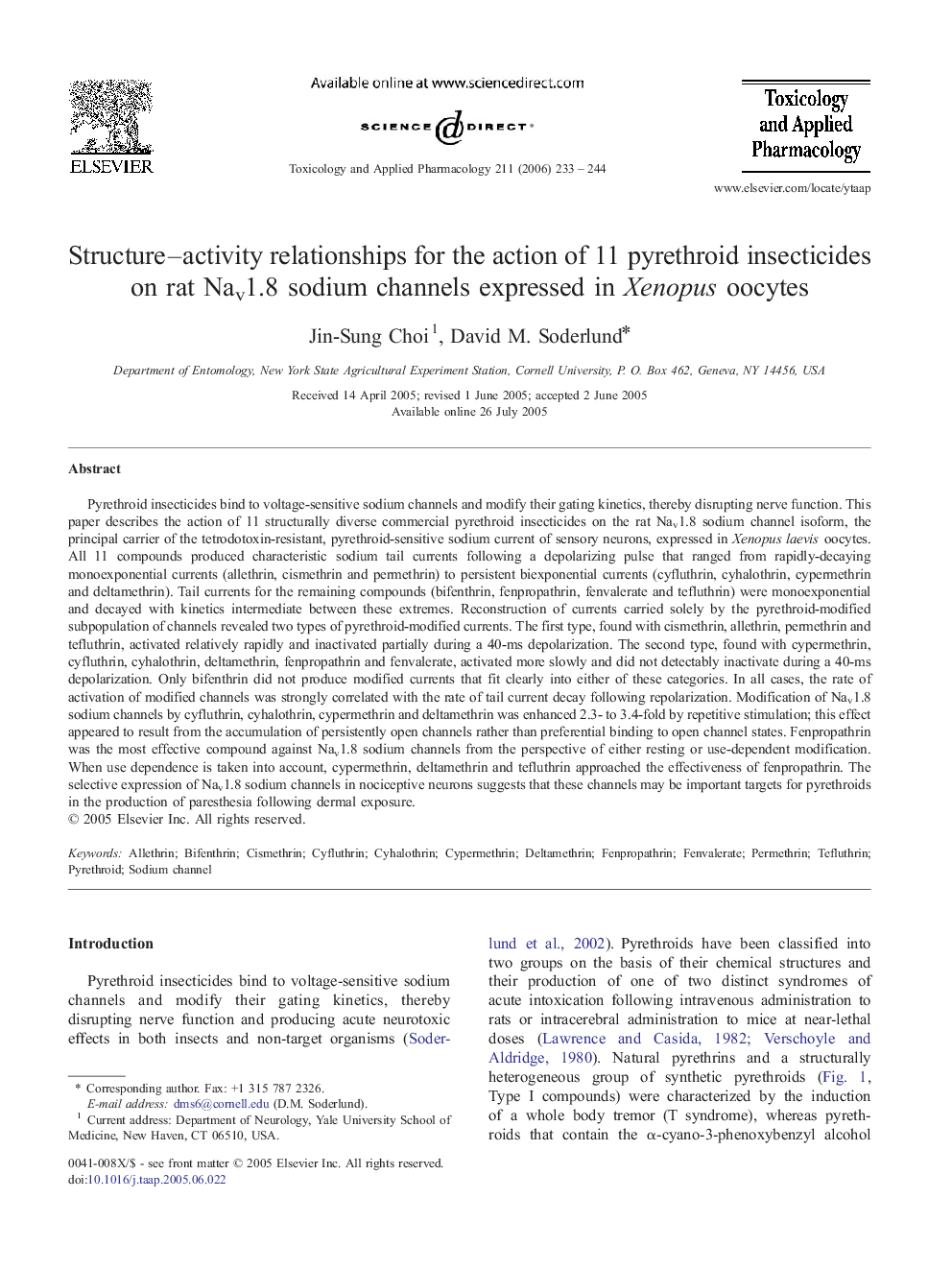| کد مقاله | کد نشریه | سال انتشار | مقاله انگلیسی | نسخه تمام متن |
|---|---|---|---|---|
| 2571881 | 1128656 | 2006 | 12 صفحه PDF | دانلود رایگان |

Pyrethroid insecticides bind to voltage-sensitive sodium channels and modify their gating kinetics, thereby disrupting nerve function. This paper describes the action of 11 structurally diverse commercial pyrethroid insecticides on the rat Nav1.8 sodium channel isoform, the principal carrier of the tetrodotoxin-resistant, pyrethroid-sensitive sodium current of sensory neurons, expressed in Xenopus laevis oocytes. All 11 compounds produced characteristic sodium tail currents following a depolarizing pulse that ranged from rapidly-decaying monoexponential currents (allethrin, cismethrin and permethrin) to persistent biexponential currents (cyfluthrin, cyhalothrin, cypermethrin and deltamethrin). Tail currents for the remaining compounds (bifenthrin, fenpropathrin, fenvalerate and tefluthrin) were monoexponential and decayed with kinetics intermediate between these extremes. Reconstruction of currents carried solely by the pyrethroid-modified subpopulation of channels revealed two types of pyrethroid-modified currents. The first type, found with cismethrin, allethrin, permethrin and tefluthrin, activated relatively rapidly and inactivated partially during a 40-ms depolarization. The second type, found with cypermethrin, cyfluthrin, cyhalothrin, deltamethrin, fenpropathrin and fenvalerate, activated more slowly and did not detectably inactivate during a 40-ms depolarization. Only bifenthrin did not produce modified currents that fit clearly into either of these categories. In all cases, the rate of activation of modified channels was strongly correlated with the rate of tail current decay following repolarization. Modification of Nav1.8 sodium channels by cyfluthrin, cyhalothrin, cypermethrin and deltamethrin was enhanced 2.3- to 3.4-fold by repetitive stimulation; this effect appeared to result from the accumulation of persistently open channels rather than preferential binding to open channel states. Fenpropathrin was the most effective compound against Nav1.8 sodium channels from the perspective of either resting or use-dependent modification. When use dependence is taken into account, cypermethrin, deltamethrin and tefluthrin approached the effectiveness of fenpropathrin. The selective expression of Nav1.8 sodium channels in nociceptive neurons suggests that these channels may be important targets for pyrethroids in the production of paresthesia following dermal exposure.
Journal: Toxicology and Applied Pharmacology - Volume 211, Issue 3, 15 March 2006, Pages 233–244